Must Have AI Customer Experience Solutions in 2024
Imagine you’re up late at night trying to troubleshoot a product issue. You desperately need help, but the customer service line is closed. Suddenly, a chat window opens, and you’re talking to a helpful customer service rep.
But wait a minute, it’s midnight! Is this a night owl employee, or could it be an AI chatbot? With the leaps and bounds in AI technology, it’s getting harder to tell.
Imagine a world where your customers don’t need to hold their breath while listening to dreadful hold music, waiting to answer their questions.
Picture your customer service so smoothly that your clientele doesn’t even realize they’re chatting with a robot! Sounds like science fiction, right?
Suppose your business isn’t already integrating Artificial Intelligence into its customer experience strategy. In that case, you’re missing out on convenience, cost-savings, customer churn, brand loyalty, and, most importantly, customer satisfaction.
Let’s dive in and discover how the AI industry has evolved and why you need to jump on this bandwagon in 2024.
Are you ready?
Check out our detailed review of the
Best Generative AI Customer Experience Solutions.
Key Takeaways (TLDR)
- AI in customer service offers interactions virtually indistinguishable from humans.
- Choosing the right AI platform is crucial and should align with your business goals.
- Integration is key and should seamlessly integrate with existing CRM systems.
- Ongoing monitoring and updates are essential for keeping the AI system effective.
- Investment in AI for customer service can offer a strong ROI.
Why You Need to Know About Today’s AI Customer Experience Solutions
This journey began when I started exploring options for an AI customer service solution to help one of my clients take their past customer service tickets, knowledge base articles, customer journeys, and chat conversations to create our custom AI-powered customer advocacy solution.
I wanted it to be as automated and hands-off as possible, something that would run itself. I was curious to know if any platform out there could do it. I’ll be honest; I was in for quite a surprise.
AI is no longer that clunky, robotic voice that was more frustrating than helpful. With the rise of Large Language Models (LLMs) like ChatGPT and Natural Language Processing (NLP), AI customer service is virtually indistinguishable from human interaction.
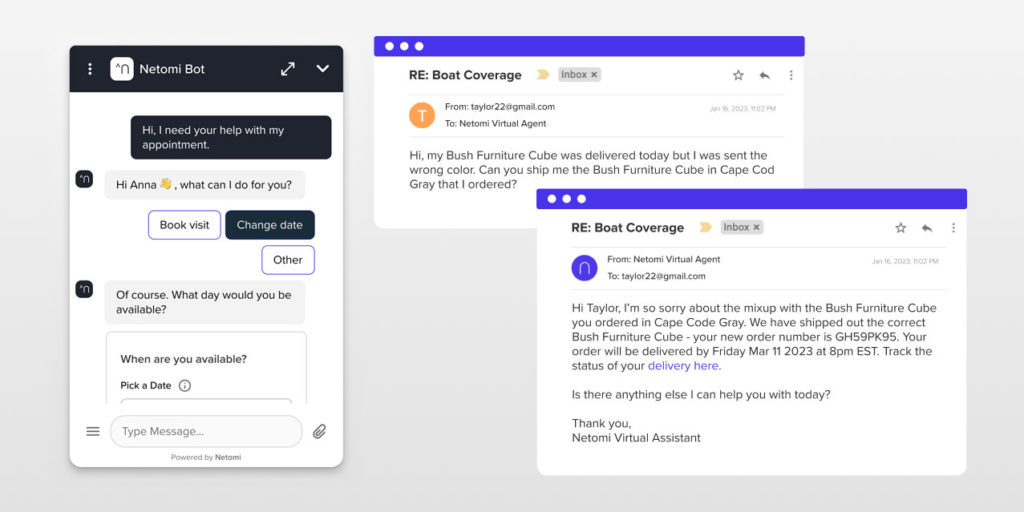
Companies like Netomi, AISERA, and Forethought AI have even integrated with popular platforms like Zendesk to seamlessly deliver personalized, round-the-clock AI support.
In fact, AI has evolved so much that it’s even able to evaluate customer feedback sentiment. In an example provided by Netomi during my demo with them, they showed how it could evaluate customer sentiment as positive or negative to determine if it should escalate the conversation before people begin to get mad.
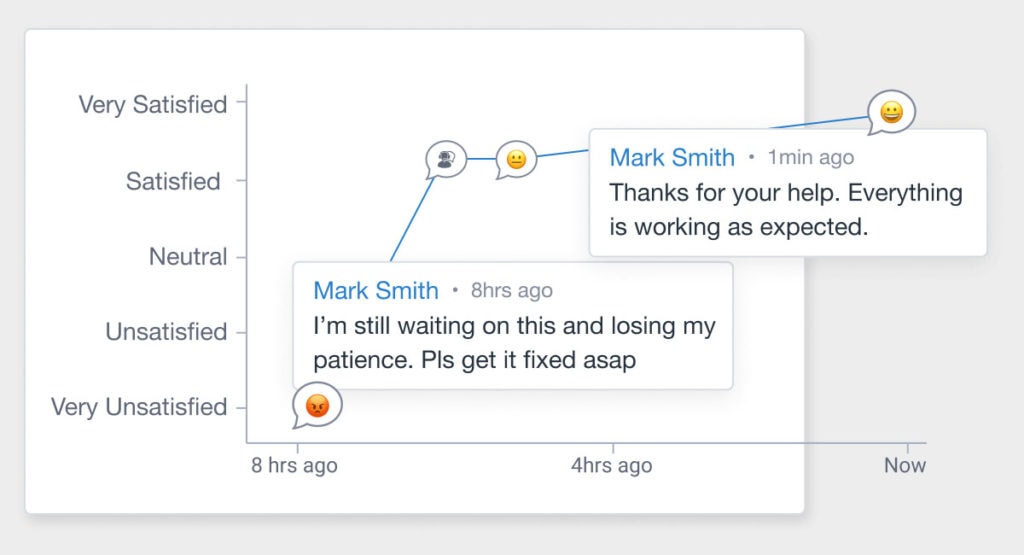
What about different languages? Absolutely, modern AI customer experience solutions can now speak to customers in their native languages as well.
AI can also analyze past support and sales tickets to determine who is the expert team member on the topic and begin funneling those questions to the appropriate team to improve efficiency.
This boosts customer loyalty and customer satisfaction scores and takes a chunk of the workload off your team’s plate.
According to Forbes, 75% of enterprises implementing AI-powered customer service have witnessed a 10% increase in customer satisfaction scores.
Steps for Harnessing AI in Customer Experience
So, you’re ready to bring AI into your customer experience game. Awesome! But before you dive right in, the first critical step is choosing the right AI platform, and this is where many businesses falter.
It’s like buying shoes; you need the right fit, style, and comfort level because integrating AI into your business models and customer experiences is a long-term commitment.
Especially since it will start interacting with new customers immediately, you need to ensure it provides the customer experience you want. So, let’s break down what you need to look for.
Understand Your Needs
First off, let’s get real. What exactly are you looking to achieve with AI in your customer service? Is it answering emails, chats, FAQs, resolving issues, or even upselling?
Different platforms excel in various aspects of the personalized customer experience journey, so be sure you’re clear on your goals.
For example, if you’re an eCommerce business, you might want a platform that can integrate well with your inventory management system and let the AI tell customers when something is out of stock and make suggestions for alternatives.
To pick the ideal AI platform, you’ve got to consider a few key factors: functionality, ease of use, and scalability. The goal is to select a platform that can answer customer queries accurately, update itself based on new data, and grow as customer needs and your business expands.
A McKinsey report states that 40% of time spent on customer service activities can be automated using existing technology.
It would help if you also looked for positive customer feedback surveys and experience reviews and potentially scheduled a demo to see the platform in action.
Additionally, Gartner predicts that by 2025, 40% of customer service interactions will be automated through AI and Machine Learning.
Alignment to Business Goals
Just as you wouldn’t use a hammer to cut paper, you need an AI platform that aligns with your business goals. For instance, a text-based solution might suffice if your primary aim is to automate first-level customer support.
But if you’re looking to offer round-the-clock support that covers sales, tech support, and FAQs, you’ll need something more versatile and robust.
Suppose you want to take it a step further. In that case, you can replace some preliminary customer experience interactions with real-time digital voice responses. Combining Large Language Models (LLMs) like ChatGPT, Natural Language Processing (NLP), and Natural Voice libraries can produce voice-based responses that often sound indistinguishable from real human conversations.
For example, I’ve had to write every knowledge base article on the CyberPowerPC website. After writing hundreds of articles, I figured I could hand off that responsibility to the tech support department.
However, they aren’t natural writers, and as such, the responsibility of writing these articles fell back on me, and since I don’t have the time to dedicate to it, not much was being added to it.
I needed a better way to offload this, knowing what articles to write and, ideally, a solution that could write it for me.
In my discussions with Forethought AI, they showed me how their solution can detect when questions are being asked that don’t have supporting articles and can also write an article for me to review. Then, with just a click of a button, I can publish it and have it start surfacing to customers instantly.
Integration with Existing Systems
Nobody wants a complicated relationship, including the one with your AI platform. Ensure it connects with your existing customer relationship management (CRM) software, back-end operations software, and databases.
You don’t want to put your IT department through the nightmare of resolving compatibility issues, nor do you want to experience data fragmentation, which can lead to poor customer experience and service.
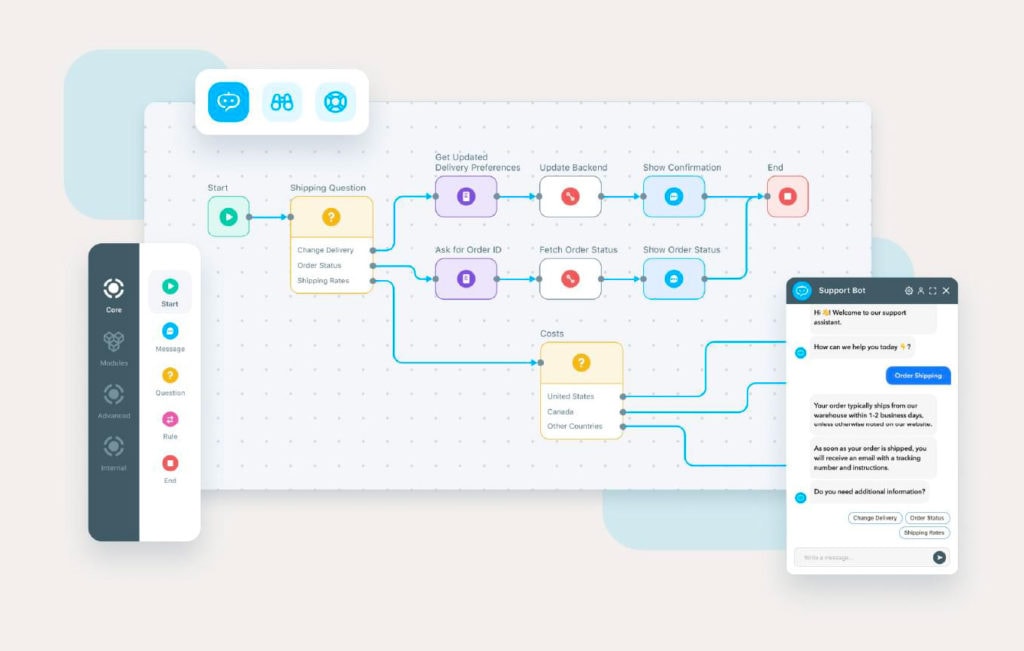
Firstly, ensure the AI solution you’re eyeing offers APIs or out-of-the-box integrations for the platforms your business already uses. This way, your AI system can easily import data, customer histories, and other vital information without causing a bottleneck.
Seamless integration allows for a unified dashboard displaying AI or human-driven customer interactions. In fact, according to a study by PwC, businesses that successfully integrated their CRM systems reported a 42% reduction in labor costs.
Secondly, involving your IT department from the get-go is essential. They can perform the technical due diligence and ensure that integrating a new AI tool won’t lead to potential security vulnerabilities.
Customer data is sensitive, and mishandling it could lead to compliance issues and erode customer trust. A Truata study found that 76% of consumers said they would take their business elsewhere if they knew companies mishandled their data.
You also want to avoid the hassle of manually transferring data between platforms. Companies like Netomi offer seamless integration with popular platforms like Zendesk, making your life much easier.
Considering all these integration questions above can help ensure your shiny new AI tool integrates seamlessly with your existing systems. Your team will thank you, your customers will love you, and you’ll dodge the digital anarchy that comes with mismatched systems.
Ease of Use and Customization
Remember, you’re not launching a space shuttle here. The platform you choose should be user-friendly, with an intuitive interface. It’s nice if it allows you to customize responses or features easily.
Even better would be if it could just act as an analyst that could gather all of the information in our databases and, in AI-fashion, figure out what information it needed to pull and respond naturally like an actual human.
And that was the critical distinction that separated many of the AI platforms available today. Many supposed AI platforms still required me to manually create conversation paths, which defeated the idea of being fully autonomous. However, three of the eight platforms I evaluated stood out: Netomi and Aisera.
These three platforms can take all of your existing sources of customer information and interactions and determine what information to use and how to respond to customer inquiries automatically. This ensured that it would continually learn as I added more to my knowledge base or just from my ongoing support tickets.
Test, Review, Repeat
Consider running a pilot test before you fully commit to a platform. This will help you iron out any kinks and get an authentic feel of what to expect. Reviews and case studies can also be highly insightful. Take it from businesses that have been there and done that.
Also, many of these AI platforms will offer realistic demos based on your existing data to see a real-world example of how it might interact with customers with a limited range of select questions. It’s not the whole shebang, but it should give you a pretty good idea of how it responds.
Price and Scalability
Here’s the clincher: Can you afford it, and more importantly, can it grow with you? Look for scalable options that fit your current budget but can adapt to your business as it grows. According to a study by Deloitte, 82% of companies that have invested in AI report a positive ROI.
Real-world Example
In my evaluation of Netomi, I was surprised to learn that they were the first AI customer experience management solution being implemented by Disney, who had for decades believed that human interaction was the only way to achieve a high-quality customer interaction experience.
These AI platforms can even take it a step further. They can integrate with your existing CX platform to create an AI layer to help your sales and customer service staff predict the information they will need based on the context of the customer inquiry.
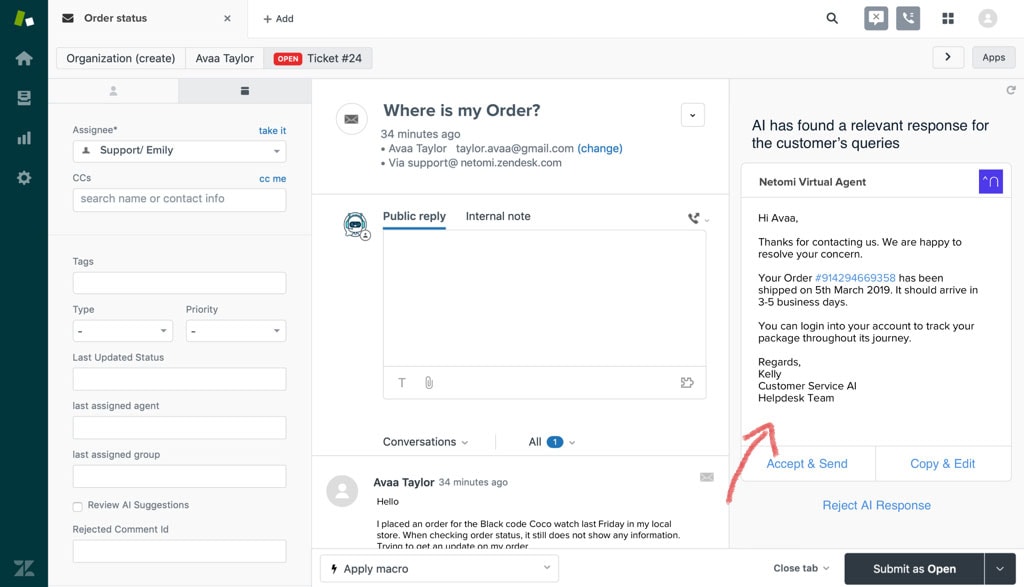
That means your customer service teams and sales representatives can get through tickets faster by answering customers with just a click of a button rather than wasting time searching for answers.
Choosing the right AI platform isn’t just a one-off decision; it’s an ongoing commitment to enhancing your customer experience. But take the time to make an informed choice, and you’ll be a customer service rockstar before you know it.
Ongoing Monitoring and Updates
Your work continues after you’ve launched your AI customer service system. Ongoing monitoring and updates ensure that your AI customer journey map remains practical and up-to-date. That’s a big responsibility for your AI system, so you can’t afford to slack on updates.
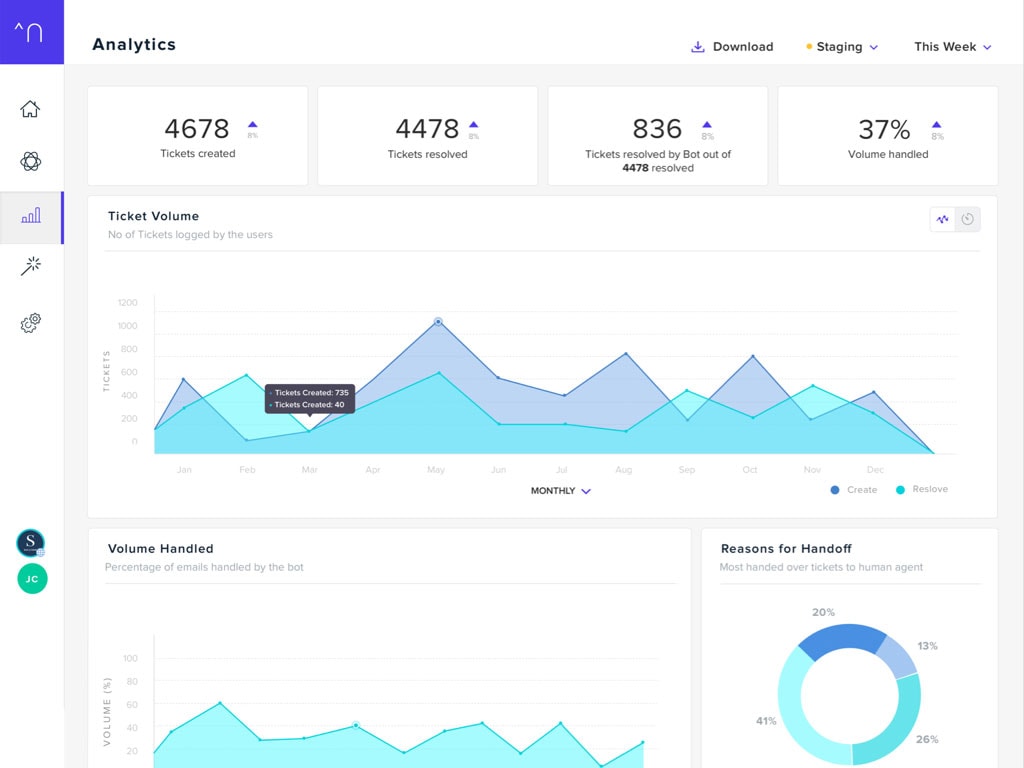
Monitor customer interactions for any hiccups or common issues that the AI can’t resolve. These are signals to adjust your system’s learning model.
Remember to keep your system compliant with changing regulations and updated with information about new products or services. Think of ongoing monitoring and updates as maintenance that keeps your AI customer service engine running smoothly.
In Summary
Each of these platforms brings something unique to the table. Your choice should align with your business goals and the customer queries you typically handle.
- Understand Your Needs: Clearly identify what you want to achieve with AI in customer service, and pick a platform that aligns with these goals. You can schedule a demo to get a taste of the action.
- Alignment to Business Goals: Ensure the AI tool you’re considering aligns with your business objectives: basic customer support or 24/7 comprehensive service. Your AI should fit your plans like a glove, not oversized mittens.
- Integration with Existing Systems: Talk to your IT department early on and make sure the AI platform can snuggle up comfortably with your existing CRM software and databases. You don’t want a messy break-up with your current systems.
- Ease of Use and Customization: Opt for an AI platform that’s as easy to use as your smartphone and allows customization. It should be more like a friendly assistant than a complicated puzzle.
- Test, Review, Repeat: Before diving in headfirst, run a pilot test and peruse reviews to avoid regrettable, “What was I thinking?” moments.
- Price and Scalability: Look for a platform that fits your budget now but can grow with you—like a plant you don’t have to water too often but still flourishes.
- Real-world Example: Always keep an eye on industry benchmarks. Suppose companies like Disney are opting for a particular AI platform. In that case, chances are it’s got some pixie dust worth your attention.
- Ongoing Monitoring and Updates: Even the most brilliant AI can face issues. Keep an eye on customer interactions and make updates as necessary.
Key Considerations
Don’t go for the cheapest option to save a buck. Consider the long-term ROI and the impact on customer retention and satisfaction. Also, compliance with data protection laws is crucial, so make sure your platform is GDPR or CCPA-compliant.
Going Beyond
As much as we want AI to be automated, and it can get pretty close in many cases, AI is not a set-it-and-forget-it solution. Constant updates and employee training will help you get the most out of your investment.
AI can help offset many of the most common issues that your business is already facing. Those simple things, like order status, operating hours, or even common technical problems, keep coming up repeatedly.
However, as customer expectations for your products and services change or technology evolves, introducing new challenges, AI will still rely heavily on new data. It’s important that it’s being fed the correct data. AI relies on accurate information to craft a precise response. Still, letting your support staff become lax in providing detailed solutions could corrupt your AI with poor answers.
Remember that the goal of implementing AI as a customer experience solution is about something other than replacing your customer support and sales staff. It’s designed to relieve your customer support team from handling the little things so they can focus on providing the best service on the big stuff.
Consider implementing multi-channel support or even AI-powered chatbots on your social media platforms. Or explore post-purchase engagement solutions with software platforms such as Drift, which offer many of the previously mentioned AI customer experience strategies with a pre-sales and post-purchase focus.
Wrapping Up
Long story short, AI is the future of customer service. It reduces costs, increases efficiency, and, most importantly, leaves your customers happier than a cat in a cardboard box. So, if you’re serious about taking your already successful customer experience management and service game to the next level, now is the time to embrace the age of AI. And hey, if you need more advice on enhancing your business, branding, or customer experience, you know where to find us—right here on AskNam.com!
Frequently Asked Questions
How is AI used in customer experience?
AI in customer experience primarily functions through advanced chatbots and virtual assistants that use Large Language Models and Natural Language Processing to interact with customers. These technologies integrate with existing customer relationship management (CRM) platforms and provide instant, round-the-clock support, handling everything from first-touch sales queries to support tickets, making them virtually indistinguishable from human interaction.
How is AI improving customer experience?
AI is revolutionizing customer experience by offering prompt, accurate, and personalized service without the long wait times associated with human operators. It uses data analytics to anticipate customer needs, offering targeted solutions with higher satisfaction rates. According to Forrester, businesses that integrate AI into customer service have seen a 10% increase in customer satisfaction scores.
What are the benefits of AI customer experience?
AI-powered customer experience offers multiple benefits, including cost savings, operational efficiency, and elevated customer satisfaction. It can manage a high volume of interactions simultaneously, allowing human staff to focus on more complex tasks. This dual approach optimizes workforce allocation and improves overall service quality, making it a win-win for businesses and their customers.
Editorial Process:
Our reviews are done by myself and come from my own experiences. I may not have used some products recently, so my reviews may reference details such as specifications and features that may have changed since I last used them. Let me know if you find any discrepancies.
Some of the links in this article may be affiliate links, which can compensate us at no cost if you decide to purchase a paid plan. These are products we’ve personally used and stand behind. This site is not intended to provide financial advice. You can read our affiliate disclosure in our privacy policy and editorial disclosure.







